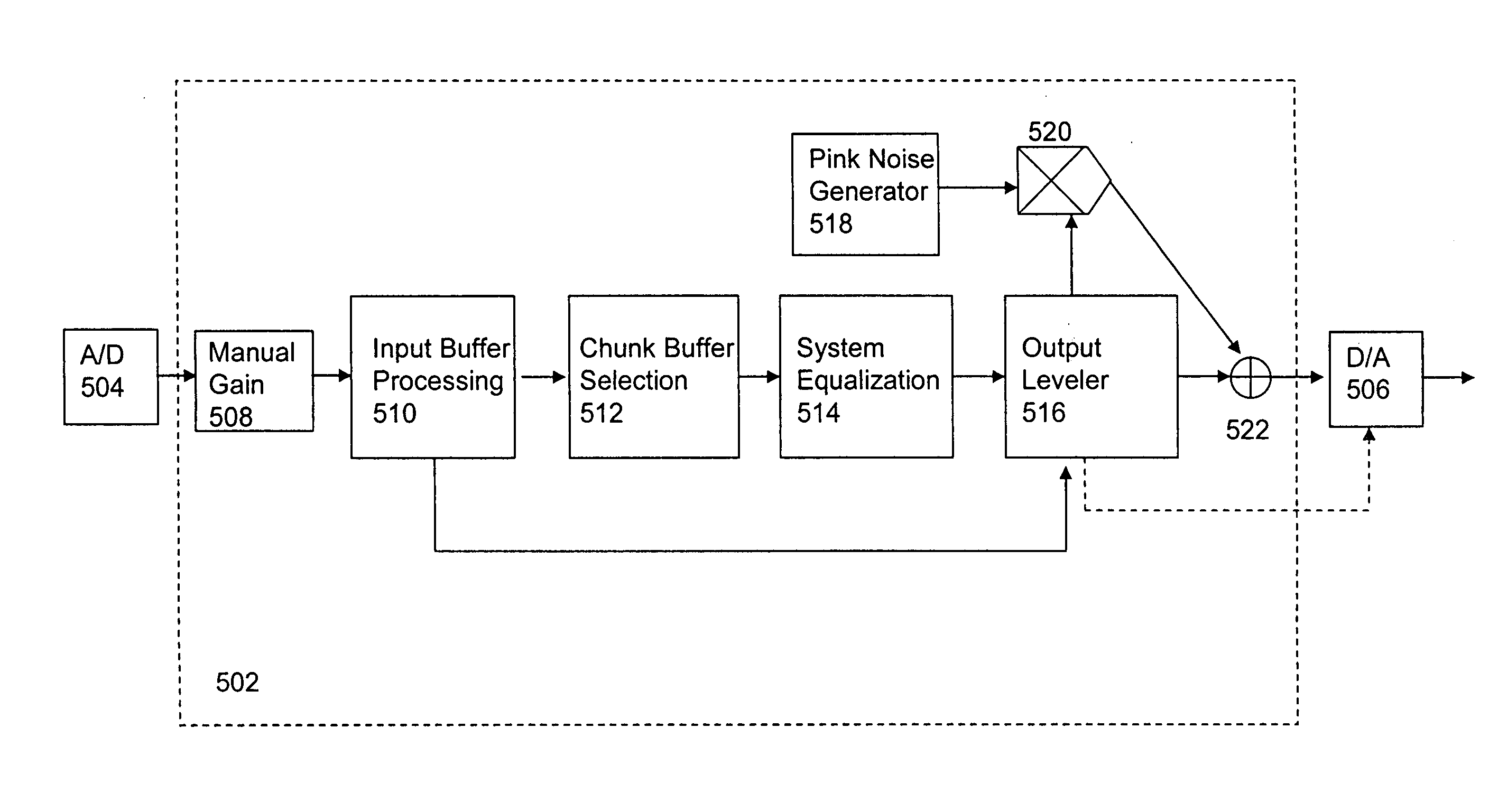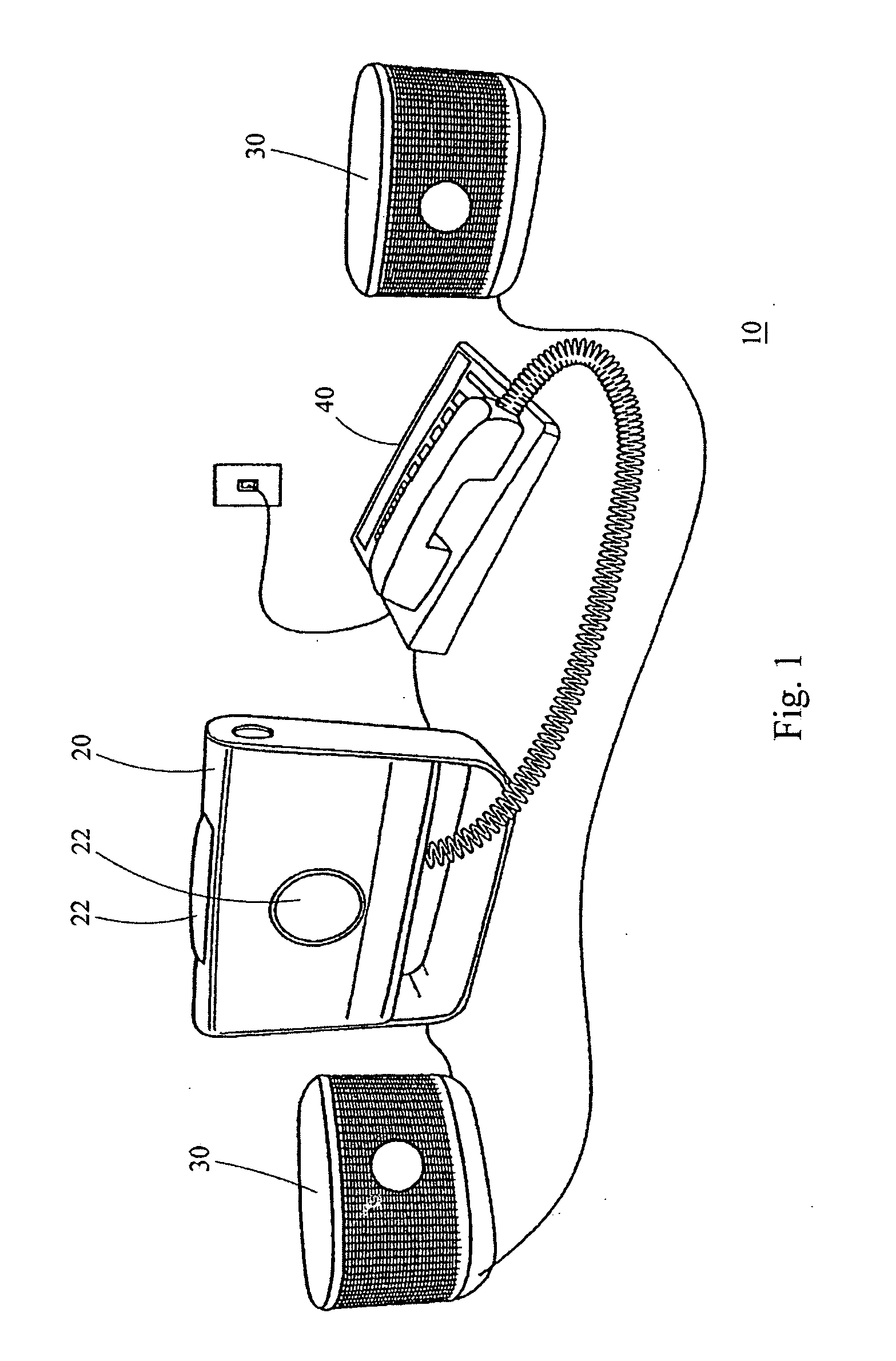Method and apparatus for speech privacy
- Summary
- Abstract
- Description
- Claims
- Application Information
AI Technical Summary
Benefits of technology
Problems solved by technology
Method used
Image
Examples
Embodiment Construction
[0030] A privacy apparatus is provided that adds a privacy sound into the environment that closely matches the characteristics of the source (person speaking), thereby confusing listeners as to which of the sounds is the real source. The privacy apparatus may be based on a talker's own voice. This permits disruption of the ability to understand the source speech of the talker by eliminating segregation cues that humans use to interpret human speech. The privacy apparatus reduces or minimizes segregation cues. The privacy apparatus may be quieter than random-noise maskers and may be more easily accepted by people.
[0031] A sound can overcome a target sound by adding a sufficient amount of energy to the overall signal reaching the ear to block the target sound from effectively stimulating the ear. The sound can also overcome cues that permit the human auditory system segregate the sources of different sounds without necessarily being louder than the target sounds. A common phenomenon ...
PUM
 Login to View More
Login to View More Abstract
Description
Claims
Application Information
 Login to View More
Login to View More - R&D
- Intellectual Property
- Life Sciences
- Materials
- Tech Scout
- Unparalleled Data Quality
- Higher Quality Content
- 60% Fewer Hallucinations
Browse by: Latest US Patents, China's latest patents, Technical Efficacy Thesaurus, Application Domain, Technology Topic, Popular Technical Reports.
© 2025 PatSnap. All rights reserved.Legal|Privacy policy|Modern Slavery Act Transparency Statement|Sitemap|About US| Contact US: help@patsnap.com



